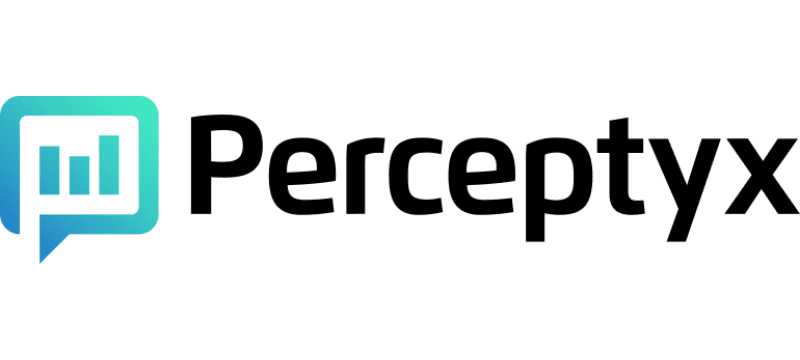Turbocharging your HR impact with a data-driven culture
HR leaders have invested in new technologies and introduced new analytical capabilities to their organizations.
But, how do you harness the data of over 150,000 employees worldwide and feed that into how you best serve millions of customers across the globe?
That’s what this session with people analytics leaders from Coca-Cola and HP reveals!



Digital transformation has caused an onslaught of data that organizations now collect and have access to. With the hope of improving employee experience, streamlining operations, and creating better strategies, HR leaders have invested in new technologies and new analytical capabilities. Yet for many organizations, a strong, data-driven culture remains elusive and often intuition and gut feeling continue to be the basis for a lot of the important decision-making.
To tackle this, UNLEASH is delighted to bring you this session, now on-demand, in partnership with Perceptyx where pioneering HR leaders discuss how to create and sustain a data-driven culture that unlocks the full potential of people analytics now – and in the future.
What makes an organization more data-driven?
When we talk about organizations being data-driven, on the surface it can seem abstract and intangible, especially when we then loop this in with the nuance of culture too. For many, a data-driven culture, because of these reasons, can remain elusive.
According to HBR, ”the biggest obstacles to creating data-based businesses aren’t technical; they’re cultural.”
In this webinar, Sue Lam, Global Head of People Analytics, Strategy, and Culture at The Coca-Cola Company delved into how they’re creating a data-driven culture, very much grounded and concreted in strategy and outcomes. She shared with the audience that Coca-Cola’s purpose is to “Refresh the world and make a difference.” To do this, she explained, employees need an environment and experience that inspires them and allows them to do work that inspires their lives so that they can contribute to the world. But how do they do this?
Sue explained that they have set up a people strategy that meets the business strategy and then they measure this. They look at things like leadership behavioral information that can help inform procedures and policies on knowing what areas of focus are more impactful. Knowing where the business wants to go and measure the current status enables them to drive initiatives for change.
Debby McIsaac, Global Head, Employee Engagement and Social Impact at HP had a similar story to share. She explained that at HP, they have a clear commitment to their people strategy and how that can inform the business strategy and what the goals are. She shared that they’ve made great strides in managing the natural tendencies of leadership to want to move fast. “When they are informed by what we really know is happening, it allows us to interrogate reality… we’re able to take the right signals from the data.”
And Dr. Brett M. Wells, Director of People Analytics at Perceptyx added that what separates good from great comes from these types of cultures that Debby and Sue shared. Moreover, data insights can provide leaders with choices – providing them knowledge about different trade-offs based on their decisions. There’s also particular strength Brett shared, in having the employee voice at the center of decision-making, so that actions can be based on that feedback and thus closing the feedback loop.
Breaking down silos
Brett shared with the audience and panelists that organizations have normally leveraged annual or bi-annual surveys to collect a lot of their people data. However, since the pandemic, many organizations have realized this is not frequent enough listening for actionable insights.
He explained that 4-5 organizations that have 2500+ employees are augmenting these types of surveys and adding more feedback opportunities. They are realizing that they need to be able to chart out the moments that are likely to impact outcomes the business is concerned about – like the Great Resignation. This can enable a design-thinking approach that can lead to breaking down silos in the business.
Sue and Debby both shared their experiences of how they are working to break down silos, by creating uniform mindsets towards data. At HP, for example, Debby shared that their HP Data “Rules of the Garage” mandate provides guidelines for managing and using data across the business. This has enabled, Debby explained, a connection with other areas of the business through their uniform use and perspectives around data.
The panel also considered why HR leaders, whilst not necessarily data-people, have some intrinsic skills and qualities that can make them great users and advocates for a data-driven culture. “So many things in their toolkit enables them to handle data,” Debby shared. The group touched on qualities like the capacity to listen and how data can amplify the ability of HR leaders to listen in an objective and curious mode to employees. Additional qualities were things like having a growth mindset, as well as the ability of many HR leaders to communicate the emotional side of a decision and not just the logical one.
How to set up your ecosystem and mitigate data privacy concerns
The panel moved on to share their unique ecosystems and what they believe works well for starting out in making a successful data-driven culture. Sue garnered that HR leaders need to start with strategy and the business problem first. “Whichever tech you choose should be in service of the problem. Define requirements ahead of looking for a solution.” Both Debby and Brett agreed, acknowledging that having one source of truth in where data is housed is a big differentiator to success levels.
The panel also shared some great, actionable advice around data privacy concerns.
Clearly, this is a topic of deep concern and interest, given, for example, some GDPR penalties have been hefty enough to make global headlines. For example, in 2020, H&M was fined €35 million for tracking its employees and building detailed profiles about them. One key pointer the panel provided was to only measure things if there’s an action plan to act on those results. If organizations know what they are intending to do with that information can be a good indicator of knowing what to measure or not.
Listen to this on-demand session to learn more about how to create and sustain a data-driven culture to unlock the full potential of people analytics in HR.
To find out more visit: www.perceptyx.com/
